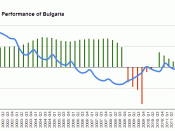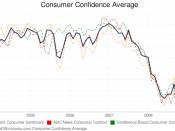Macroeconomics - The Economy After the Tragedy As Of November 2001 STEP I.
The general role of the U.S. banking system in the economy is to regulate the money supply. It keeps track of withdrawals, deposits, excess reserves, and loans. The banks operation under a fractional reserve system, which means they must maintain only a fractional of their deposits at the Fed.
STEP II.
1. Consumer Confidence - How much confidence that consumers, or the public, have in the present and future performance of the economy, which is a key determinant of the aggregate, demand curve and the source of business-cycle instability.
2. Auto Sales - The amount of cars sold in a period of time which is an indicator of consumer confidence and the shape of the economy. The financial impact is limited primarily to auto-related stocks unless the sales figures are well beyond expectations. 21.3 million units were sold compared to the 15.9
million the month before.
3. Construction Spending - The amount of money spent on construction. Completed construction projects fell a slight 0.4% in September, somewhat better than expected given the disruption to activity during the month. Residential compilations fell during the month, while nonresidential was little changed. A surge in educational projects boosted public building higher. If construction spending is down it could indicate that the economy is slowing.
4. Jobless Claims - People going to the unemployment office and filing claims. The current number is 499,000 compared to 509,000 the week before indicating that there has been a drop of 10,000 claims.
5. Existing Home Sales - The amount of homes bought in a month. For September existing home sales slowed sharply to a 4.89 million units. This represents an 11.7% drop from the upwardly revised August number of 5.54 million units, an all-time...


